Popular Cháo Gà Variations

Cháo Gà Xé Phay
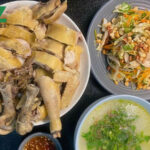
Cháo Gà Chặt
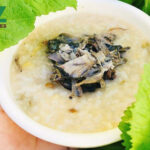
Cháo Gà Ác
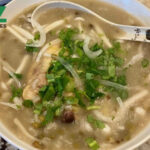
Cháo Gà Đậu Xanh

Cháo Gà Hạt Sen
Cháo Gà: Ingredients and Preparation
Main Ingredients
Main Cooking Method
Preparation Process
Cháo Gà: A Deep Dive
Cultural Significance
Taste
Texture
Aroma
Color
Serving Style
Serving Temperature
Accompaniment
- Gỏi Gà
- Fresh herbs and vegetables
Occasions
Seasons
Special Diets
Calories
Popularity
Popular Similar Dishes
- Cháo
- Cháo Vịt
- Cháo Lòng
Popular Dining Area
Cháo gà is a Vietnamese dish that is essentially a type of rice porridge or congee made with chicken.
The dish is made by simmering rice in a rich chicken broth until it breaks down into a soft, creamy texture. Pieces of chicken, usually shredded or cut into small chunks, are added to the porridge.
The flavor of cháo gà is typically enhanced with ingredients such as ginger, onions, and herbs.
It’s often served with a variety of garnishes like sliced scallions, fresh herbs (like cilantro or basil), fried shallots, and a squeeze of lime juice.
The dish is known for its comforting qualities and is enjoyed across Vietnam, often for breakfast or as a light meal.
Vietnamese tradition includes serving chicken porridge on the third day of Tết in the “lễ hóa vàng” ceremony, symbolizing respect for ancestors.
This special chicken rice porridge, prepared carefully as it represents prosperity and good fortune, marks the end of Tết celebrations and is a reverent farewell to ancestors.
Let me guide you through the features of the dish, its key components, various versions, side items, top dining spots, advantages and disadvantages, common queries, and dishes that are alike.
Key Points
Cháo Gà Images
What Are The Main Ingredients of Cháo Gà?
Cháo gà, a traditional Vietnamese rice porridge, primarily includes the following 3 main ingredients:
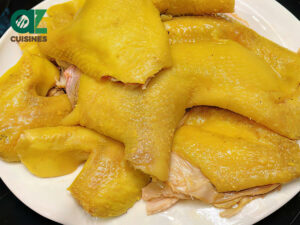
Chicken
Usually, a whole chicken or chicken thighs are used for a richer flavor.

Rice
Long-grain rice is typically used, sometimes jasmine rice. It’s the base of the congee.

Seasonings
Ginger, onion, scallions, cilantro or mint
Exploring the diverse cháo gà variations reveals how these essential ingredients can be creatively adapted to suit different regional tastes and preferences.
What Are The Most Famous Variations of Cháo Gà?
Here are the 5 variations of Cháo Gà, along with their characteristics:

Cháo Gà Xé Phay
This variation features finely shredded chicken in the porridge. It’s known for its delicate texture and is often seasoned with ginger and scallions for added flavor.
You can shred the chicken and mix it with salad to serve alongside the porridge

Cháo Gà Chặt
In this version, the chicken is chopped rather than shredded, providing a more substantial texture. It’s often served with additional toppings like fried shallots and herbs.

Cháo Gà Ác
This is made with a specific type of chicken known as “gà ác”, which is believed to have medicinal properties. The dish is often consumed for health benefits and has a richer flavor.

Cháo Gà Đậu Xanh
This variation includes mung beans along with chicken, adding a unique flavor and texture. The mung beans also contribute additional nutritional value.

Cháo Gà Hạt Sen
Featuring lotus seeds, this version of cháo gà is known for its soothing and gentle flavors. Lotus seeds add a mild, sweet taste and are believed to have health benefits.
Each of these famous cháo gà variations, with their unique ingredients and textures, can be further enhanced by pairing them with suitable cháo gà accompaniments.
What to Serve with Cháo Gà?
Serving cháo gà, a Vietnamese chicken rice porridge, presents a delightful opportunity to create a balanced and flavorful meal. Here are 2 excellent accompaniments:
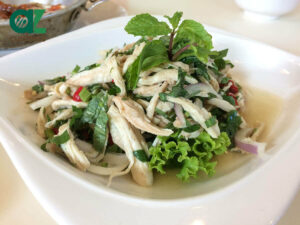
Gỏi Gà
Gỏi is a type of Vietnamese salad often made with fresh, crisp vegetables and herbs, chicken pieces, and dressed in a light, tangy vinaigrette. This salad brings a refreshing balance to the warm and comforting cháo gà. When serving cháo gà, chicken pieces can be placed on top of gỏi, or served directly on top of the congee.

Fresh Herbs and Vegetables
Garnishes like thinly sliced green onions, fresh cilantro, and Thai basil add a burst of freshness. Additionally, bean sprouts and sliced chili peppers can provide a nice crunch and heat.
To fully appreciate cháo gà, consider exploring where to eat it, as the right setting can elevate the experience of enjoying it with these recommended accompaniments.
Where to Eat Cháo Gà?
Here are my recommendations for places to eat cháo gà in Ho Chi Minh City and Da Nang:
In Saigon (Ho Chi Minh City)
Gà Ta Vân Hương
Address: 135 Trần Phú, District 5, Ho Chi Minh City
Cháo gà Cô Hiền
Address: 35 Đinh Bộ Lĩnh, Bình Thạnh District, Ho Chi Minh City
Gà Ta Ngon Số 1
Addresses:
72 Út Tịch, Tân Bình District, Ho Chi Minh City
120 Trương Công Định, Tân Bình District, Ho Chi Minh City
231 Trương Vĩnh Ký, Tân Phú District, Ho Chi Minh City
In Da Nang
Cháo Gà Bà Bảy
Address: 142 Lê Duẩn, Hải Châu District, Đà Nẵng City
Cháo Gà Lan
Address: 189 Lê Thanh Nghị, Hải Châu District, Đà Nẵng City
Cháo gà Dì Hoa
Address: 10 Lý Thường Kiệt, Hải Châu District, Đà Nẵng City
While these locations offer a variety of experiences for enjoying cháo gà, it’s important to weigh the benefits and drawbacks of consuming this dish.
Pros and Cons of Eating Cháo Gà
Examining the positives and negatives of this dish.
Pros
Cons
Moreover, don’t overlook the commonly asked questions.



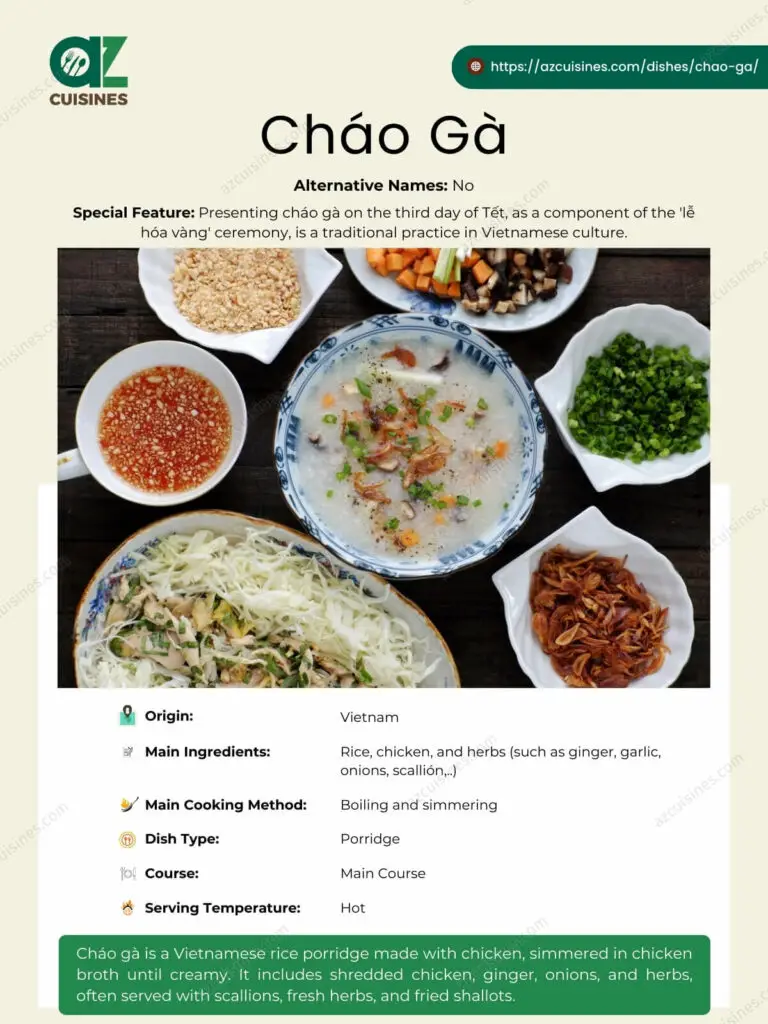

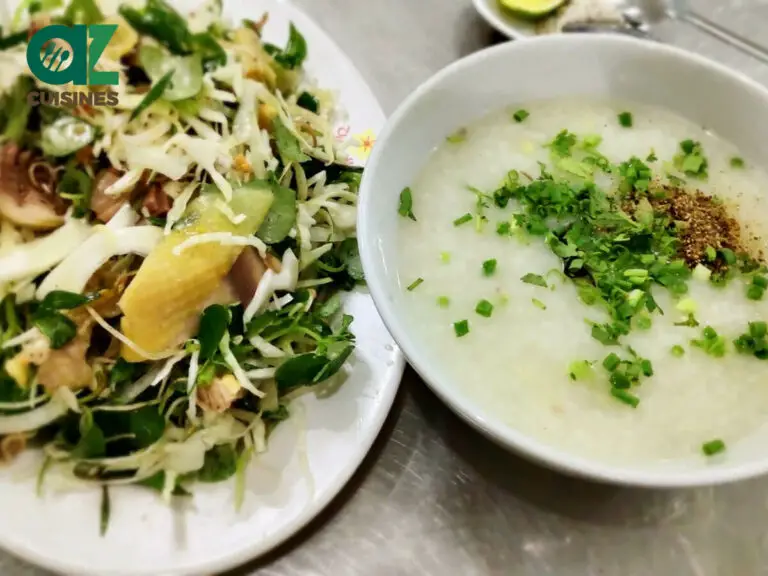




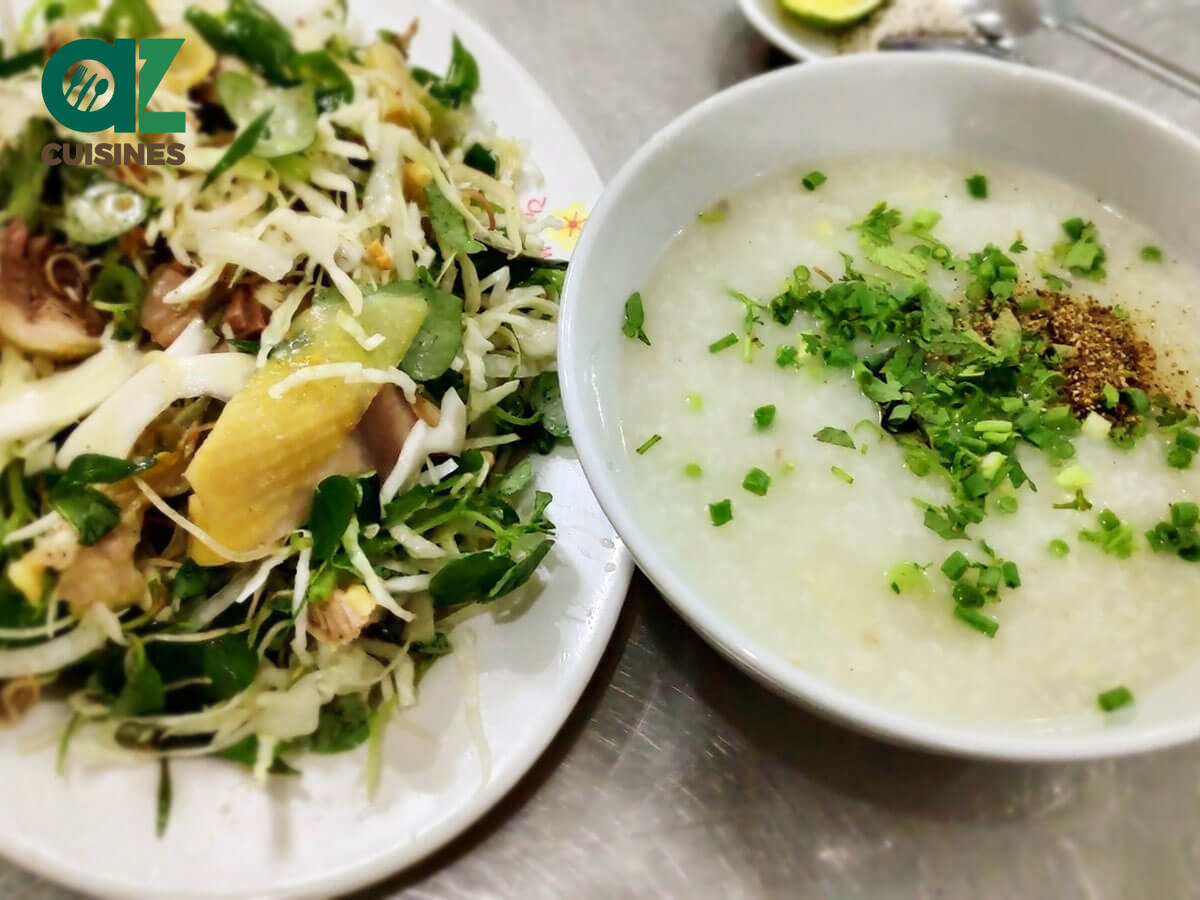





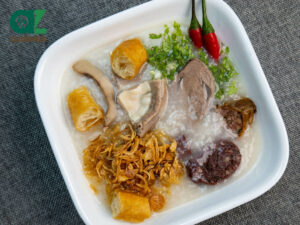
Truc Tran (Kris)
Senior Food Editor
Expertise
Home Cooking, Meal Planning, Recipe Development, Baking and Pastry, Food Editor, Cooking-video Maker, Vietnamese Food Evaluation Expert
Education
Truc Tran (Kris), an experienced food writer and editor, is great at exploring and describing global cuisines, from simple street food to fancy dining. In her writing, she skillfully mixes different flavors, cooking methods, and culinary traditions, showing the unique character of various cultures through their food and drinks. On azcuisines.com, Kris highlights her knowledge, especially in Asian cuisine and worldwide traditional dishes.